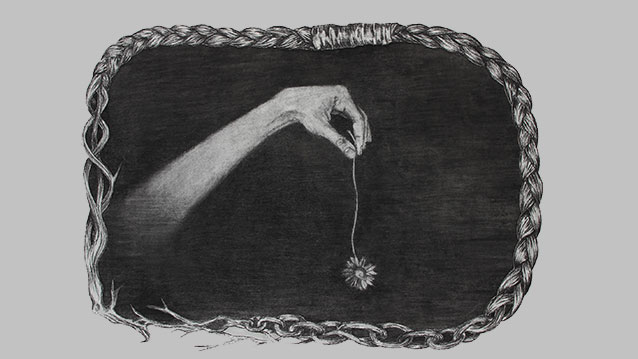EVANSTON, Ill. --- “Rebecca” -- English author Daphne du Maurier’s haunting novel about an insecure bride who is tormented by the memory of her husband’s beautiful, much-loved and accomplished late wife -- indirectly provided literary inspiration for a Chicago-based artist’s early winter 2016 exhibition at Northwestern University.
“Unnatural Growth,” Jan. 7 through Feb. 10, an Evanston campus exhibition at the Dittmar Memorial Gallery, will include 40 works by Ali Aschman, including five main works made up of many smaller components. The exhibit and an opening reception from 4:30 to 6:30 p.m. Thursday, Jan. 7, and an artist lecture and workshop, from 4:30 to 6 p.m. Wednesday, Jan. 13, are all free and open to the public.
During the Jan. 13 lecture/workshop, Aschman will discuss her work, then demonstrate how to make a stop-motion puppet. Materials will be provided so guests can make their own take-home version.
Information on the Dittmar Gallery.
The works in the exhibition reflect the artists’ struggle with the recurrent theme as Aschman says “in art and literature that oppressively tie women’s bodies to the natural world, but are nonetheless aesthetically seductive.”
For instance, in the opening passages of “Rebecca,” the narrator describes the spread of untended plants and trees surrounding her former home as “unnatural growth,” despite this being a case of nature returning to its autonomous state. Aschman understands this personification of nature as a violent and unruly force in relation to the book’s central character, Rebecca, who refused to live according to patriarchal society’s expectations.
“‘Rebecca’ really plugged into what I was already making at the time, which is why I pulled the title (for the exhibition) from the text,” Aschman said. “The expectation of a way a woman should act (both Rebecca and the unnamed narrator have to deal with feeling ‘abnormal’ or ‘unnatural” -- though in very different ways -- and the way that it is tied in with language about nature and plants was really relevant to the themes in my current work.”
Another literary reference in Aschman’s show is a series of seven charcoal drawings (titled: “Flower Girls: Ophelia”), each depicting hands holding a flower mentioned in Ophelia's final lines in Shakespeare’s “Hamlet.”
“The hands are the only part of her/my body that I have shown (because) to me, hands symbolize agency and action, but they are cut off from the body, helpless,” Aschman said. She used the same motif in her ceramic pieces.
“Unnatural Growth” features charcoal and graphite drawings, sculptures and a projected animation depicting fragmented body parts, braided hair transformed into gnarled roots and vines; and an installation of cutout paper and foam core figures, displayed against a painted background, that shows naked bodies that sink and rise in various states of unraveling and enigmatic clothed figures.
A group of small framed graphite drawings that are individually untitled, but together form what Aschman calls her “Unnatural Growth” series.
“These small pieces specifically are engaging to me because I am thinking about how each image might communicate one thing on its own, or maybe be totally obscure. But then in relation to the other pieces in the group, as well as the other pieces in the show, they can take on other associations,” Aschman said.
Aschman hopes to arouse a curiosity in the viewer to make connections between the objects and images, and to derive some personal meaning from that.
“I am more interested in evoking an atmosphere of tension that reflects the discomfort and confusion I feel about these issues of oppression, suffering and possible empowerment than I am in communicating any specific idea or opinion,” she said.
Aschman was born in California and grew up in South Africa. She has participated in selected group exhibitions in Chicago, South Carolina, New York, Pennsylvania, Alaska, Cape Town, South Africa; and Hong Kong. More information on the artist is available online.
The Dittmar Gallery is located on the first floor of Norris University Center, 1999 Campus Drive, on Northwestern University’s Evanston campus. Note: The Dittmar Gallery and Norris University Center will be closed during winter break. Hours and locations available online.


